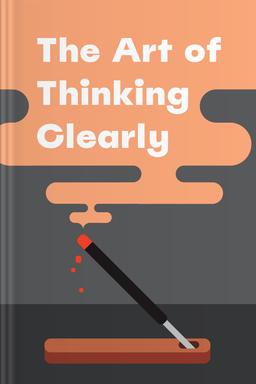You’ll learn
- Where cognitive errors come from
- Common thinking errors and how to override them
- About the types of bias
- How to make wise decisions
- How to admit your failures and take responsibility
russia has launched a full-scale war in Ukraine. Donate to support Ukraine and protect the world’s peace.

first KEY POINT
A cognitive error is the failure to think situations through clearly before concluding. Cognitive errors are systematic, meaning they don't happen out of the blues or once in a while, they are rather routine mistakes that we continue to make. What's interesting is that we don't intentionally learn these errors, we pick them up from childhood and our brain is on the automatic function when similar situations arise. For example, a common cognitive error is overestimating our knowledge more than we underestimate it. Most of us are victims of this particular error. We hardly ever underestimate our knowledge on topics that we know averagely. The common error is to think that you already know all (or most) of the things that you need to know about something simply because you were once educated in it.The only time you get to see how wrong your estimation is is when you start putting the knowledge to work. Here's an example that's very widespread: most educated couples go into marriage believing they know how to raise kids only to realize they know little to nothing about parenting. There are so many cognitive errors that we fall victim to as a result of evolution, the kind of environment we were raised in, or our unique life experiences.
For the remaining chapters of this summary, we shall be considering some of the most popular cognitive errors as well as how you can keep them from shortchanging you in life.
second KEY POINT
The media can — to a large extent — be blamed for the prevalence of the survivor bias because it only covers stories of successful individuals. The only time you get to read or watch anything about someone who failed is when that person is influential or comes from an affluent root. You never see stories of the masses who tried and failed miserably. But year in year out, the media keeps celebrating stories of people who moved from rags to riches. And this sort of thing makes the average individual imagine that success is as easy as the media portrays it. What many people don't see is that, behind every successful person, there are millions of others who tried and failed at the same thing. And thousands saw small success but couldn't make it to the headlines before they died or ruined their reputation. It doesn't mean success is unattainable, it only means that our survivorship bias makes us underestimate the amount of work that goes into building success. It doesn't matter what anyone tells you, the truth is that not everyone would become a star. Some would indeed die trying.

Continue reading with Headway app
Continue readingfirst KEY POINT
second KEY POINT
third KEY POINT
fourth KEY POINT
fifth KEY POINT
sixth KEY POINT